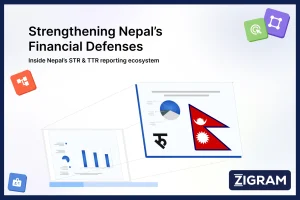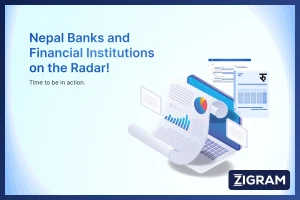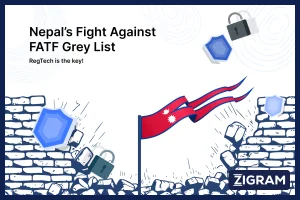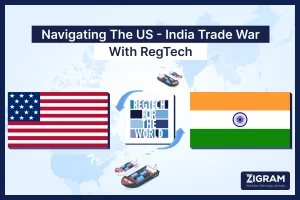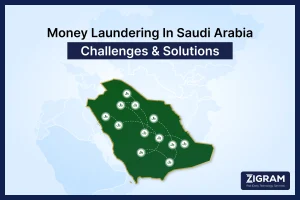In the ever-evolving landscape of global business, regulatory compliance and risk management have become paramount. Companies operating in India face a myriad of challenges, particularly when it comes to watchlist screening — a critical process in mitigating financial, legal, and reputational risks.

Understanding Watchlist Screening
Watchlist screening involves the systematic examination of individuals, entities, or transactions against various watchlists, which comprise names of sanctioned individuals, politically exposed persons (PEPs), terrorists, or entities involved in illegal activities. The objective is to ensure that businesses do not engage with sanctioned or high-risk entities, thereby complying with local and international regulations.
In the context of business and financial compliance, several types of watchlists are relevant within the Indian regulatory landscape. These watchlists primarily focus on identifying individuals, entities, or transactions associated with risks such as terrorism financing, money laundering, sanctions violations, and other illicit activities. Here are some key types of watchlists commonly used in India:
1. Sanctions Lists:
Sanctions lists contain names of individuals, organizations, or countries subject to economic or trade sanctions imposed by India or in adherence to international agreements. These sanctions may be imposed due to reasons such as terrorism, human rights violations, or geopolitical conflicts. Entities on these lists are restricted from engaging in certain business activities or transactions.
2. Politically Exposed Persons (PEPs) Lists:
PEPs are individuals who hold prominent public positions or have close associations with high-ranking government officials. They are considered higher-risk individuals due to their potential susceptibility to corruption or involvement in illicit activities. Screening against PEP lists is crucial to prevent risks related to bribery, money laundering, or other forms of financial impropriety.
3. Terrorist Watchlists:
These lists contain names of individuals or entities associated with terrorist activities or groups. Compliance with these watchlists is critical for preventing funds from being used to support terrorist organizations or activities.
4. Money Laundering Watchlists:
Lists related to money laundering include individuals or entities involved in illicit financial transactions aimed at disguising the origin of illegally obtained funds. These lists help in preventing the integration of 'dirty' money into the legitimate financial system.
5. Criminal Watchlists:
These lists encompass individuals or entities involved in various criminal activities, ranging from fraud and corruption to organized crime. Screening against criminal watchlists is crucial to prevent partnerships or transactions with entities involved in illegal activities.
6. Regulatory Watchlists:
Regulatory authorities in India maintain watchlists specific to their jurisdictions, including the Reserve Bank of India (RBI), Securities and Exchange Board of India (SEBI), and Financial Intelligence Unit-India (FIU-IND). These lists contain entities or individuals violating specific financial regulations, and compliance involves adherence to directives issued by these regulatory bodies.
7. Global Watchlists:
Apart from India-specific watchlists, businesses also need to screen against global watchlists maintained by international bodies such as the United Nations Security Council (UNSC) sanctions list, Financial Action Task Force (FATF) list, or lists provided by other international organizations. These global watchlists often contain names of sanctioned individuals, entities, or countries that must be screened to ensure compliance with international standards.
Unique Challenges In The Indian Business Environment
Remote KYC is the answer to the long, cumbersome and financially draining process of AML compliance.
1. Vast Data Landscape:
The Indian business environment operates in a vast and diverse market with many languages, cultures, and regions. This diversity extends to data sources used for watchlist screening, making it challenging to consolidate and verify information effectively. Accessing and interpreting data from different regions and languages present significant hurdles in maintaining accuracy and relevance in screening processes.
2. Technological Infrastructure:
While India has witnessed remarkable technological advancements, there are discrepancies in the technological infrastructure across regions and sectors. Many businesses, especially smaller enterprises, struggle with outdated or inadequate systems for conducting comprehensive watchlist screenings. Implementing robust and efficient screening tools becomes challenging due to infrastructure limitations.
3. Human Resource Constraints:
Skilled human resources play a pivotal role in effective watchlist screening. However, finding qualified professionals well-versed in compliance procedures and equipped with the necessary linguistic and analytical skills can be challenging in India. Moreover, the high demand for such professionals often leads to business retention issues.
4. Regulatory Complexity:
India's regulatory framework is complex and multifaceted, creating challenges for businesses to navigate. In India, several watchlists maintained by regulatory bodies and organizations are crucial for businesses to screen against to ensure compliance and mitigate risks. Here are some prominent watchlists relevant to the Indian context:
- RBI's Caution List: The Reserve Bank of India (RBI) maintains a Caution List that includes names of individuals and entities against whom the RBI has issued warnings or advisories. This list helps financial institutions avoid dealing with entities that have been cautioned by the RBI due to regulatory concerns.
- SEBI's List of Defaulters: The Securities and Exchange Board of India (SEBI) maintains a List of Defaulters that includes individuals and entities who have defaulted on payments or violated securities regulations. This list is important for securities market participants to avoid engaging with defaulters.
- FIU-IND's PEPs and STRs: The Financial Intelligence Unit-India (FIU-IND) maintains lists related to Politically Exposed Persons (PEPs) and Suspicious Transaction Reports (STRs). PEP lists contain names of individuals with prominent political positions or associations, and STRs flag suspicious financial transactions that may be linked to money laundering or other illicit activities.
- UNSC Sanctions List: India complies with the United Nations Security Council (UNSC) sanctions list, which includes individuals, entities, and countries subject to international sanctions due to involvement in terrorism, arms proliferation, or other threats to international peace and security.
- FATF's High-Risk Jurisdictions: The Financial Action Task Force (FATF) identifies high-risk jurisdictions that pose significant threats in terms of money laundering and terrorist financing. Though not an India-specific list, compliance with FATF recommendations is crucial for Indian businesses engaged in international transactions.
- OFAC Sanctions List: While not an Indian list, the Office of Foreign Assets Control (OFAC) sanctions list by the U.S. Department of the Treasury is essential for global businesses, including those operating in India. It contains names of individuals, entities, and countries subject to U.S. sanctions.
Strategies For Overcoming Challenges
1. Comprehensive Compliance Frameworks:
Establishing a robust compliance framework is foundational for effective watchlist screening. Companies must meticulously study and align their policies with various regulatory guidelines. Implementing a risk-based approach to compliance enables prioritization of resources and efforts toward high-risk areas, optimizing the screening process.
2. Utilization Of Technology:
Investing in advanced technological solutions is imperative for streamlining watchlist screening processes. AI-powered software and machine learning algorithms can automate the screening of vast datasets, enhancing accuracy and efficiency. Cloud-based solutions can facilitate accessibility and scalability, overcoming infrastructure limitations.
3. Collaboration And Data Sharing:
In a diverse and vast business environment like India, collaboration among industry players and data sharing can be beneficial. Establishing industry-wide databases or platforms where companies can collectively contribute and access verified information can significantly enhance the effectiveness of watchlist screening while minimizing duplication of efforts.
4. Continuous Training And Development:
Addressing the human resource challenge requires a concerted effort toward training and development. Companies should invest in continuous training programs to upskill their workforce in compliance procedures, technological tools, and linguistic capabilities. Additionally, fostering a culture of compliance and accountability within the organization is essential.
At ZIGRAM we harness the power of Artificial Intelligence (AI) in watchlist screening as businesses seek more efficient and accurate methods to comply with regulatory requirements and mitigate risks. Our flagship product, PreScreening.io (PSIO), offers several advantages in enhancing the watchlist screening process, making it more effective and streamlined. Here are some key ways it is utilized in watchlist screening:
1. Data Analysis And Pattern Recognition:
- Large-scale Data Processing: PSIO can process vast amounts of data quickly and accurately, which is crucial when dealing with extensive watchlists and diverse datasets.
- Pattern Recognition: PSIO’s machine learning algorithms can identify patterns and anomalies in data, helping to detect potential matches with watchlist entities.
2. Natural Language Processing (NLP):
- Multilingual Capability: Many watchlists may contain names in various languages. NLP enables PSIO to understand and process information in different languages, improving the accuracy of screenings.
- Contextual Understanding: NLP helps in understanding the context of names and entities, reducing false positives and improving the overall precision of the screening process.
3. Automation Of Screening Processes:
- Real-time Screening: PSIO enables real-time screening of transactions, customers, or entities against watchlists, ensuring timely identification of potential risks.
- Continuous Monitoring: PSIO can continuously monitor and update watchlists, ensuring that businesses stay current with the latest regulatory changes.
4. Risk-Based Approach:
- Prioritization of Risks: PSIO can assess the risk level associated with different entities, allowing businesses to prioritize their screening efforts based on the perceived level of risk.
- Adaptive Screening Models: PSIO can adapt to changes in the risk landscape, adjusting screening parameters dynamically to address emerging threats.
5. Machine Learning For Improved Accuracy:
- Training Models: Machine learning models in PSIO can be trained with historical data to improve accuracy over time, learning from past screening results and refining their capabilities.
- Reducing False Positives: PSIO can help minimize false positives by continuously learning from screening outcomes and refining the criteria for matching.
6. Integration With Other Systems:
- Seamless Integration: AI-powered, PSIO, watchlist screening systems can be integrated with other compliance and risk management systems, creating a seamless and cohesive regulatory compliance infrastructure.
- Cross-Functional Collaboration: Integration allows for collaboration across different departments, enhancing the overall risk management strategy.
7. Enhanced User Experience:
- User-Friendly Interfaces: PSIO watchlist screening tools often come with user-friendly interfaces, making it easier for compliance officers to manage and interpret screening results.
- Automated Reporting: PSIO can generate automated reports, providing insights into screening activities and highlighting potential risks.
Our integration of AI in watchlist screening represents a significant leap forward in improving the efficiency, accuracy, and overall effectiveness of compliance processes. As technology continues to advance, businesses that leverage AI in their watchlist screening efforts are better positioned to navigate the complexities of regulatory compliance and proactively manage risks in the dynamic business environment.
ZIGRAM is the one-stop solution for all your compliance needs. Try our FREE DEMO to experience what you’re missing in your AML and KYC processes!
- #Watchlist
- #India
- #NameScreening
- PreScreening.io

